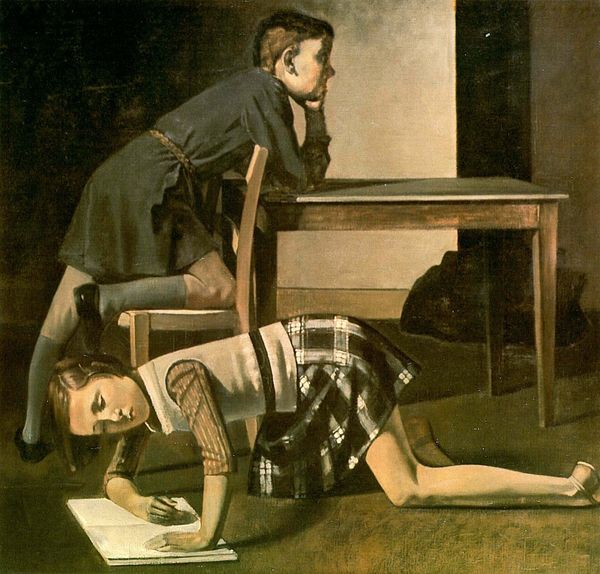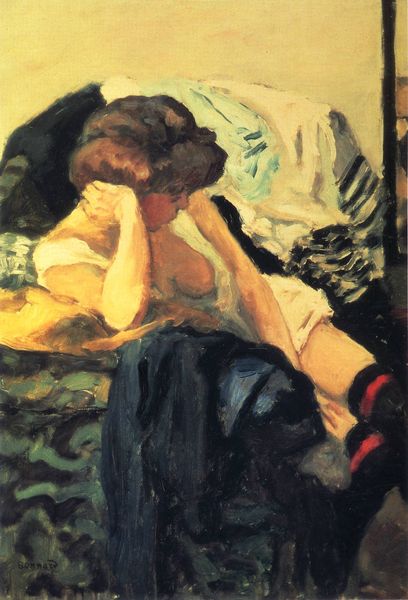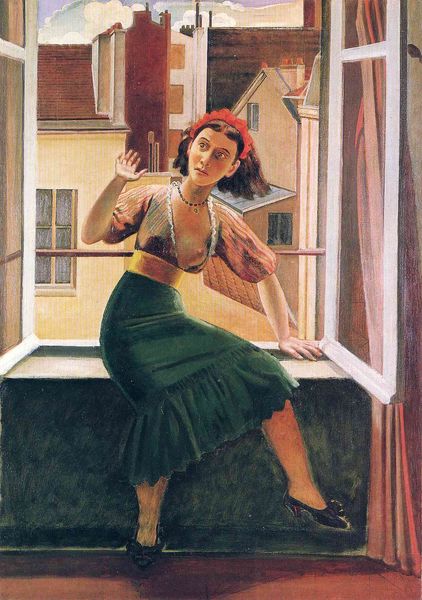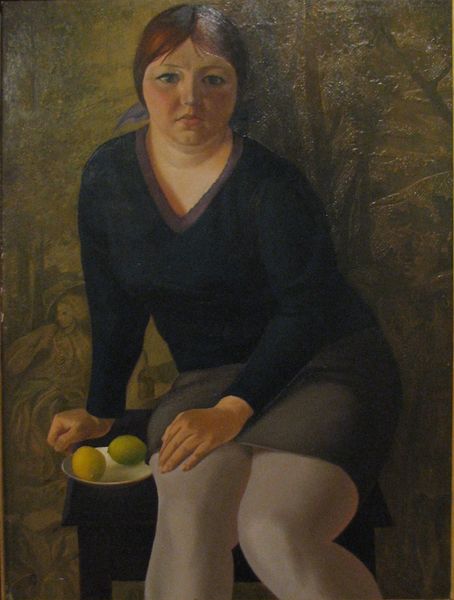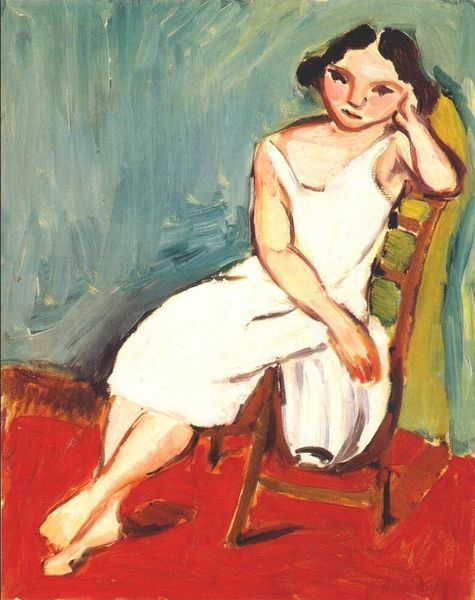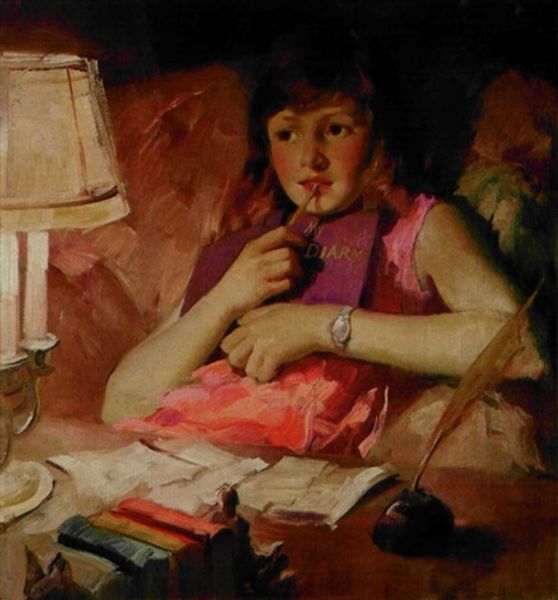
oil-paint
#
portrait
#
oil-paint
#
figuration
#
oil painting
#
genre-painting
#
nude
#
sitting
#
modernism
#
realism
Copyright: Balthus,Fair Use
Editor: We're looking at Balthus's "Girl and Cat" from 1937, rendered in oil paint. It's...well, it's unsettling. The girl's gaze and pose, the way her dress is hiked up...it feels deliberately provocative. What am I missing? Curator: Provocative indeed! Balthus, you know, never studied formally. His genius springs from pure intuition. Consider this work not as a snapshot but as a stage. The heavy shadows, the static pose, even that watchful cat—they all amplify a sense of burgeoning, unformed desire. The air is thick with it. It makes one uncomfortable, doesn't it? Editor: Definitely uncomfortable. The cat seems like a silent observer, complicit somehow. But where does that discomfort come from? Curator: Ah, there's the question! It comes from Balthus's refusal to sentimentalize childhood. He sees, and asks us to see, that it’s never wholly innocent. The light hits the girl, casting long shadows…are we glimpsing a secret world, a private drama? Or is it simply awkward, an adolescent caught between identities? Editor: So, it's the ambiguity that gets under your skin? Curator: Precisely. He traps us, the viewers, between our own projections and the painting’s deliberate opacity. He refuses to deliver a clear narrative, which makes the painting all the more… sticky, shall we say? Like an image haunting your dreams long after you’ve woken up. Editor: That's a fascinating way to think about it. I went in expecting something… straightforwardly inappropriate, maybe? But now I see it's much more complex. Curator: Isn’t it always? Balthus was a trickster, really. He leads you down one path and then disappears, leaving you to fend for yourself. And maybe, just maybe, that’s the most revealing experience of all.
Comments
No comments
Be the first to comment and join the conversation on the ultimate creative platform.

